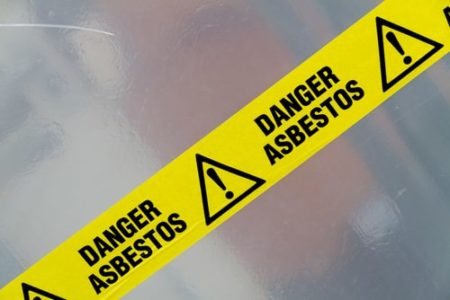Every year, people hire contractors to renovate their homes and businesses throughout the United States and the world. These renovations, regardless of the size of the project, have the potential to put these contractors and builders in danger if the home was built before 1978.
Any home that was built before that year could potentially have lead or asbestos in it and have serious health implications for those living in the structure, as well as those working on the project, such as cancer and asbestosis. That is why it is important to hire a lead-safe certified renovator in order to ensure the safety of everyone. ZOTA Professional Training offers you the opportunity to earn a certificate as a lead-safe certified renovator or an EPA certificate for lead abatement, both recognized by the U.S. Department of Health and Human Services (HHS), and puts you in high demand the moment you begin your career.
The Danger of Lead or Asbestos Exposure
Lead and asbestos are two of the most dangerous foreign substances you could have hidden inside your home and have serious adverse effects on your health including mesothelioma, asbestosis, and even cancer. In order for contractors to protect themselves and complete their job, it is important to have a lead-safe certified renovator and an individual who has an EPA certificate in lead abatement, both of whom can help identify any potential dangers that may need to be corrected.
Here are some of the potential problems that properly certified professionals can help protect you from:
Lead
Exposure to lead can cause health problems in both adults and children. Some of the health issues experienced may be minimal, such as headaches and nausea. However, some of the health effects of lead exposure or lead poisoning may include the following:
- For Children:
- Delayed mental development and memory problems.
- Hearing loss
- Short attention span and loss of concentration
- For Adults:
- High blood pressure, kidney damage, digestive problems, muscle and joint pain
- Problems with fertility, pregnancy, and prenatal health problems for the baby
If you live in an older home, it is always important to double check and make sure that your home doesn’t have lead anywhere inside it. It can be removed through lead abatement or renovating, repairing, and painting (or lead RRP). Our trained professionals and instructors at ZOTA Professional Training have been certified as a lead-safe certified renovator, or is EPA certified as a lead abatement supervisor, and can help protect both homeowners and contractors as they embark upon the adventure of renovating or building a structure.
Asbestos
Asbestos is a mineral that occurs naturally in the world around us. There are six different types of asbestos, but they all grouped together with fibers that are interwoven. These fibers can be separated and isolated for use in commercial applications but once separated, they are resistant to heat, fire, chemicals, and do not conduct electricity, which is why asbestos was a favorite for many industries to use in building homes before 1978.
However, asbestos has a dark side that could potentially cause illnesses such as asbestosis, cancer, and mesothelioma. Mesothelioma most often can be found in the lining of the lungs and the abdomen due to the presence of asbestos in the home. Usually, when a patient has been diagnosed with mesothelioma, they have somewhere between 18 to 31 months to live. Symptoms of this disease often include chest pain, shortness of breath, and general fatigue and exhaustion.
Compare and Contrast: The Difference Between RRP and Abatement
The presence of asbestos and lead in a home or business can be dangerous for the health of anyone working or living in the building. Having a certified lead-safe renovator, or someone who has an EPA certificate for lead abatement, can make the difference between a safe home or office.
While lead and asbestos are often placed into the same category, they are actually quite different, which is why it is common for both previously certified professionals to be present at a construction project. RRP and Abatement are two separate types of projects requiring a specialized and licensed professional to identify and treat.
RRP
RRP is usually done by the owner of the property to help make the property look more appealing. These projects are usually not undertaken with the goal of permanently removing lead as the goal, but are short-term projects and do not involve massive renovations inside the bones of the home or business. It is more like painting a room or painting the shutters and is easy to evaluate and complete
Abatement
Unlike RRP,the purpose of abatement is to permanently get rid of lead-based paint hazards throughout a business or home. These requests are usually initiated by the local officials or the property owner. However, it is important to remember that anyone who performs an abatement must be licensed and recognized by your local government and the HHS. Only those who are approved and licensed may conduct any part of the abatement process. After all, you wouldn’t want an untrained and unlicensed professional to assess the overall health conditions of your home.

Bottom Line
If you want to make sure your home or business does not have lead or asbestos hiding in the walls, it is always important to double check your local government regulations regarding RRP and lead abatement. It will serve your home or business well to ensure that whoever inspects your home is confident in their knowledge and their job.
At ZOTA Professional Training, we can help you find competent, careful, and knowledgeable experts certified as lead-safe renovators or in EPA lead abatement. For more information and to talk to a ZOTA Professional Training representative, contact us today.



